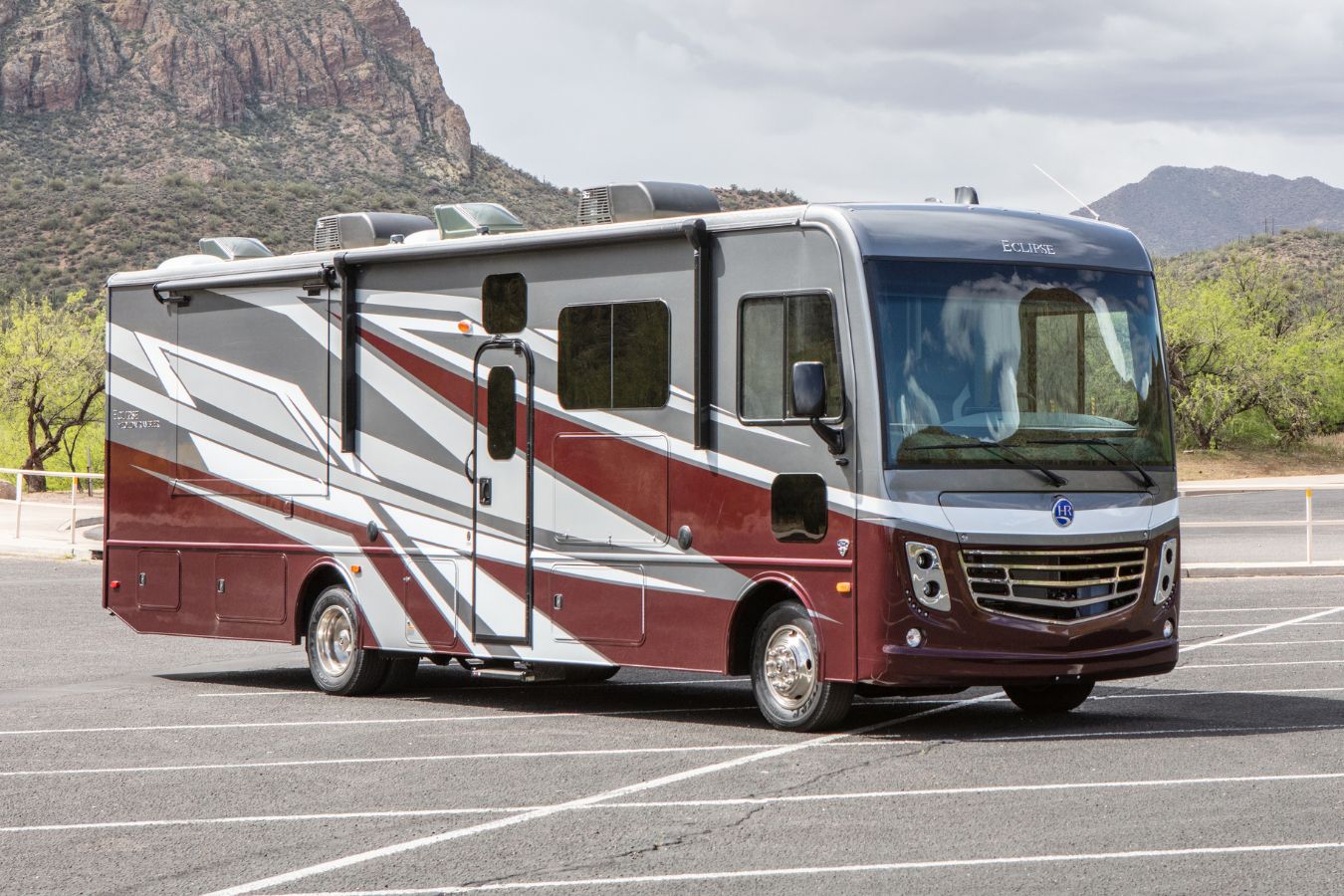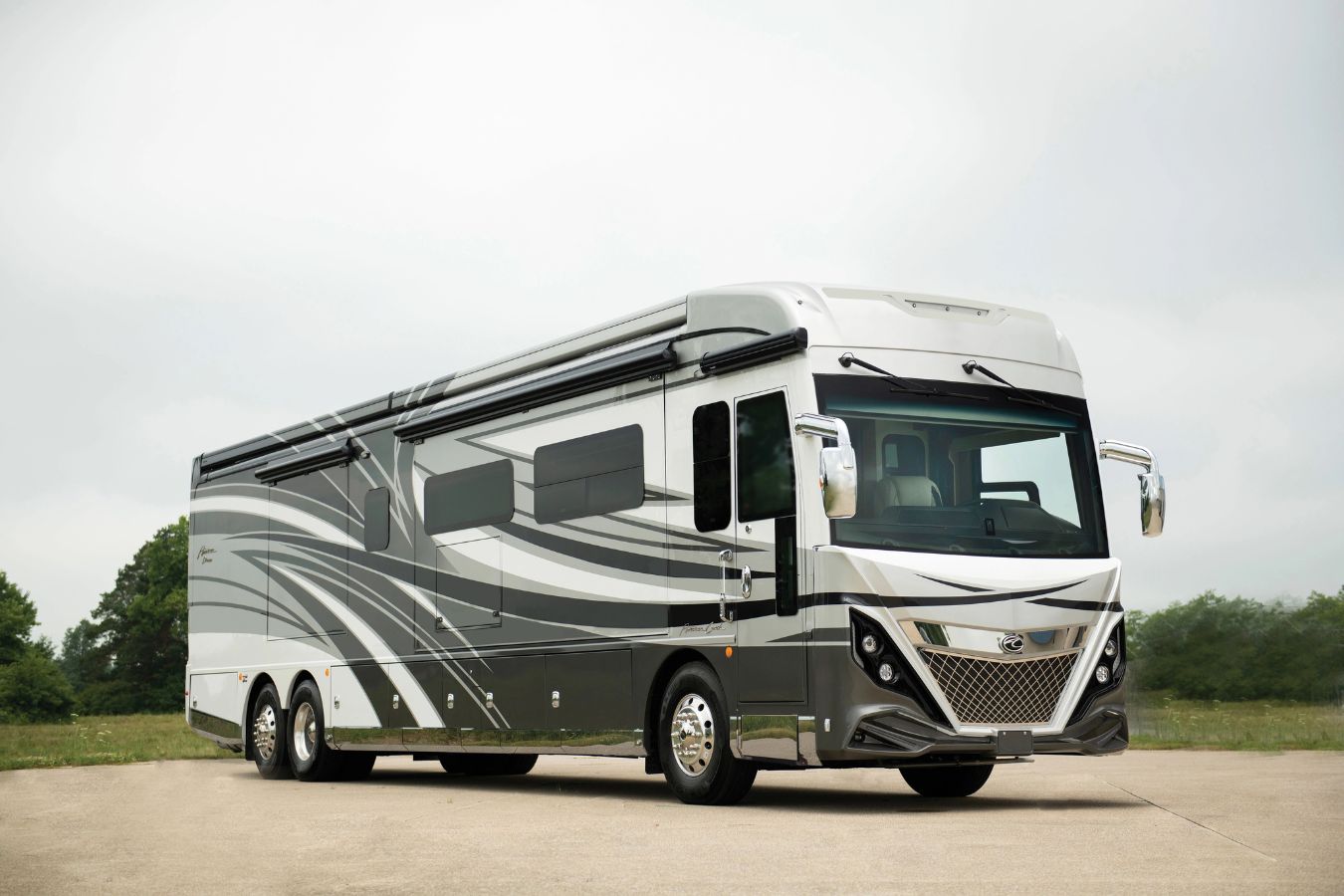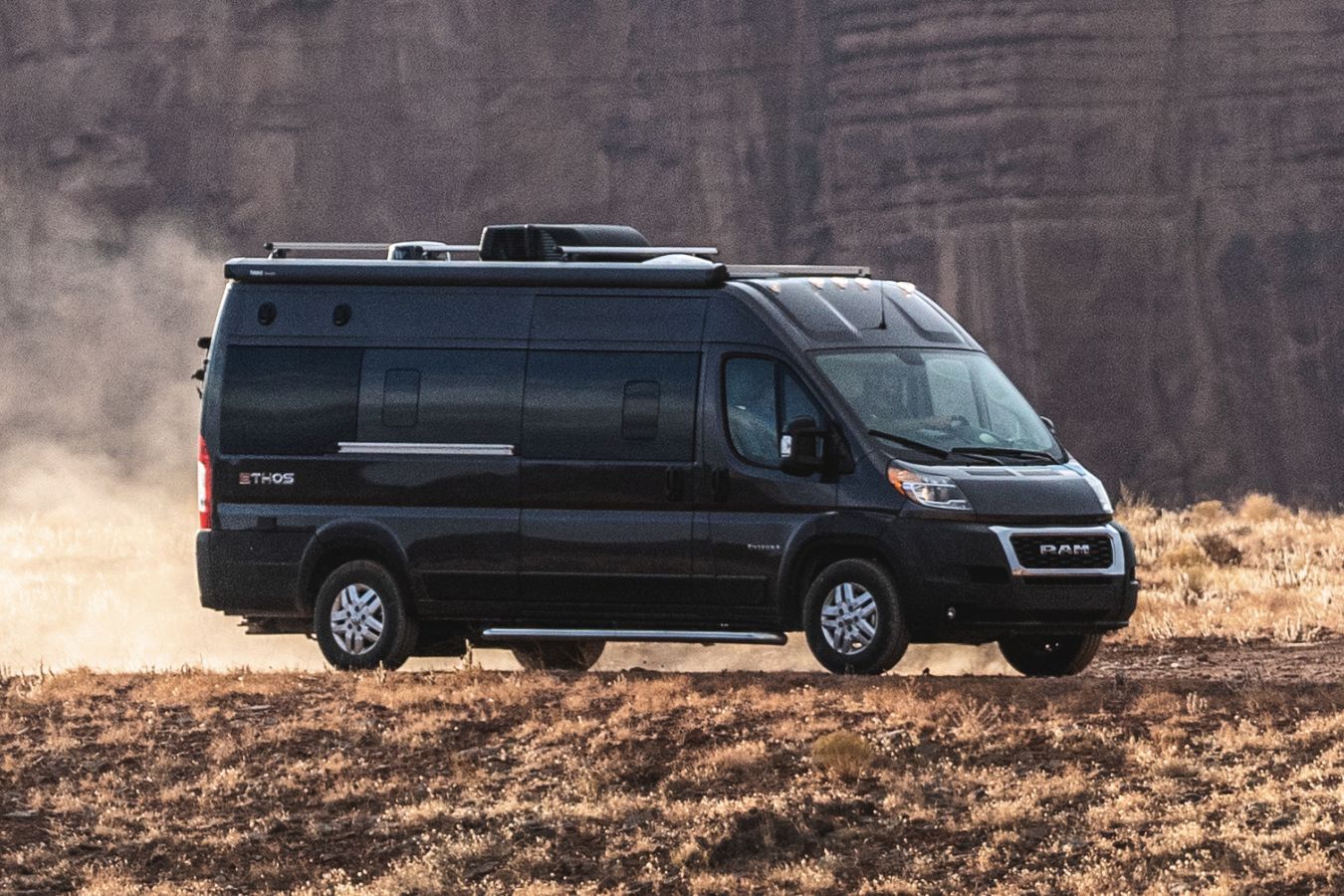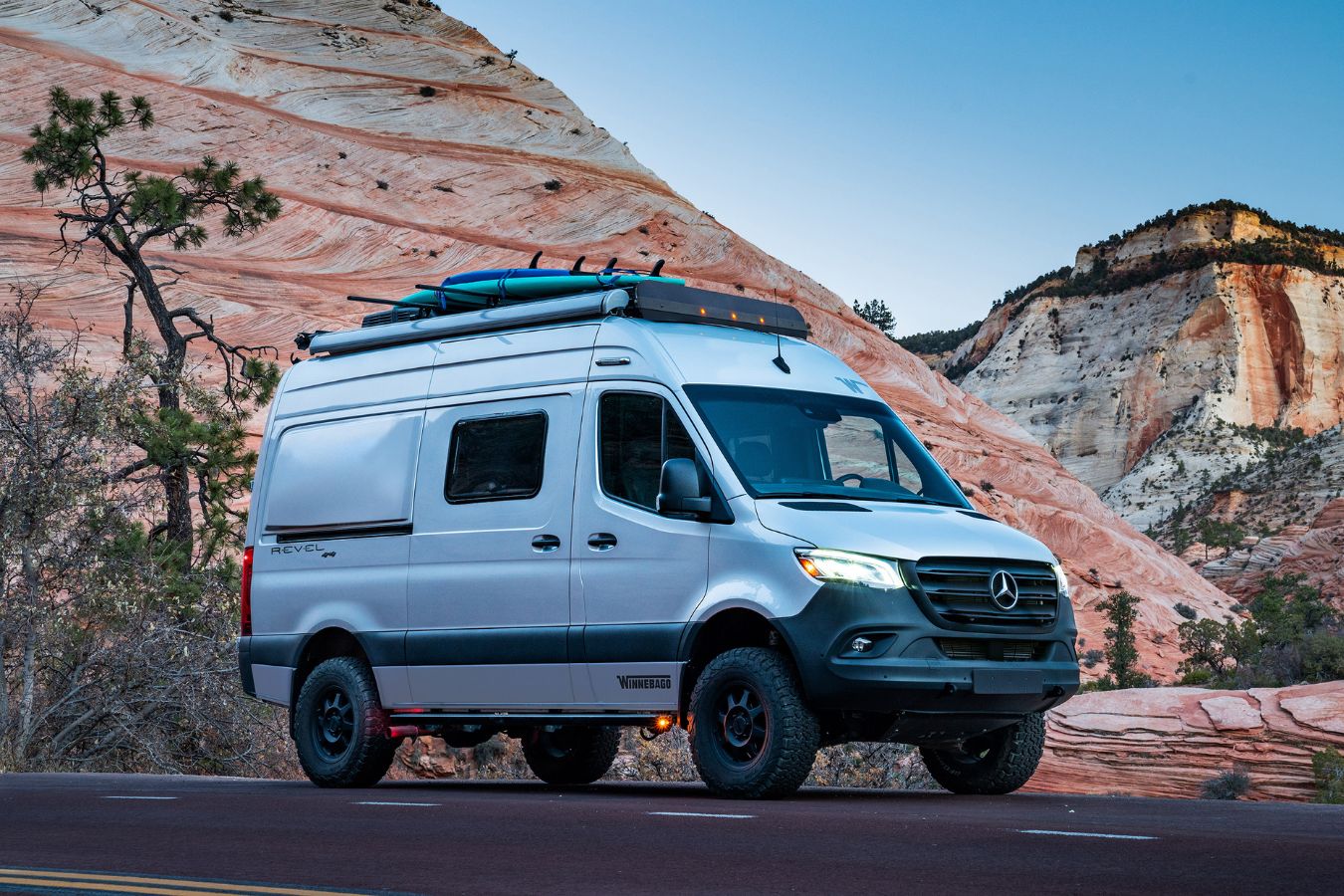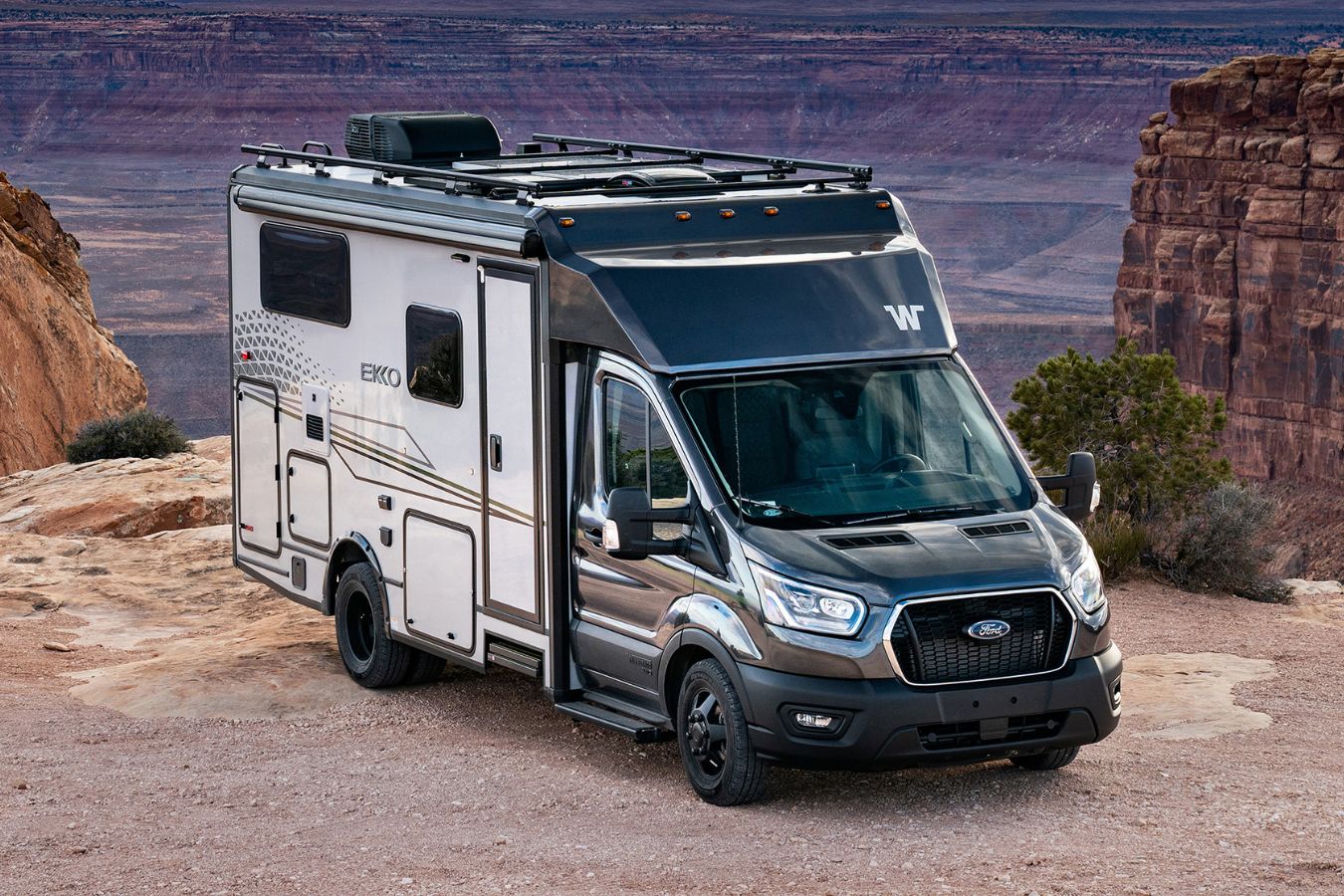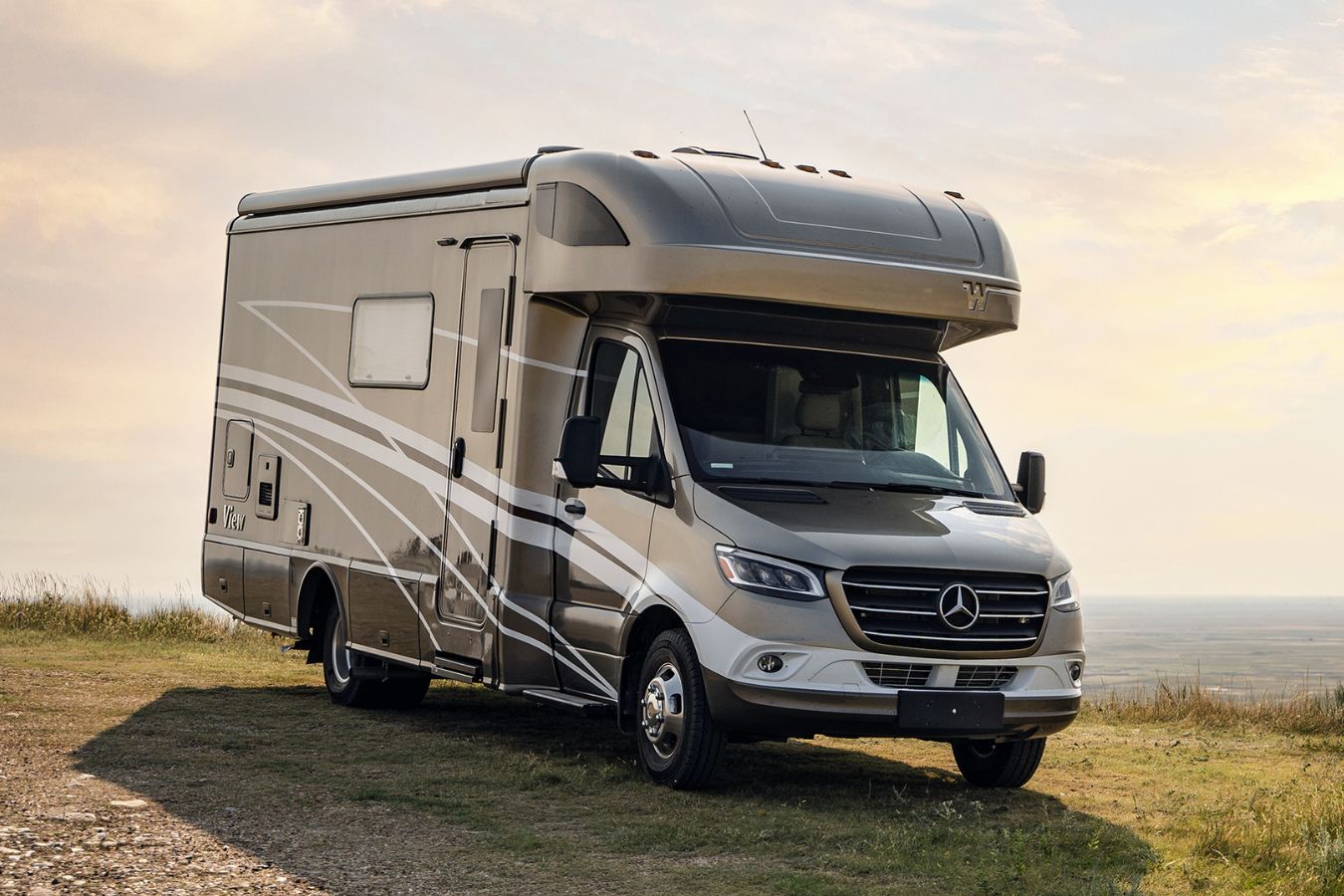Gas vs. Diesel RVs: Is One Better?
In discussing Class A, Class B and Class C RVs, one question has dominated the conversation: Which fuel type is better – gas or diesel? In short, there is no right answer. However, there are differences between the two. It’s mostly a matter of what the RVer needs and how the recreational vehicle will be used that makes one preferable over the other.
A good method of determining your RV goals is to define and differentiate the RV classes. By having a solid grasp on the size, purpose and capabilities of each, you’ll better understand what engine-type is best suited for your RVing style.
Class A RVs
Class A RVs are the largest of the classes, commonly ranging between 25 and 50 feet in length. They sit on bus or truck chassis, making them capable of supporting thousands of pounds but limiting their overall maneuverability.
Holiday Rambler Eclipse (Class A Gas)
American Coach American Dream (Class A Diesel)
Class A RVs are perfect for the full-time RVer who wants to spend most of their time on the road without sacrificing the luxuries of home. They often have slideouts – areas that extend the interior when parked – which make these motorhomes actual homes away from home. They feature premium amenities such as hardwood flooring, full kitchens, enclosed bathroom(s) with showers, dedicated bedrooms, multiple TVs and, most importantly, TONS of storage space. Small recreational vehicles, off-road toys, and even commuter vehicles can be safely towed behind a coach of this size.
Because of their stature, however, one may be limited in where they can travel. Boondocking – parking and living off-grid with no hookups to water or electricity – might be narrowed by where you’re able to take your RV since off-roading in a big-rig isn’t necessarily advisable. U.S. state and national parks and even some RV parks maintain size restrictions, so it’s best to know ahead of time the types of destinations in your RVing goals.
Gas vs. Diesel – Class A RVs
Here’s what you need to know about the differences between gas and diesel engines. Though the following list was developed specificaslly for Class A RVs, most of these attributes pertain to Class B and Class C RVs as well.
Anything marked with an asterisk (*) pertains only to Class A RVs.
- Price
There’s no way around it – diesel rigs are more expensive. Sometimes, a lot more. However, these initial costs are often made up for in other ways… - Maintenance
When it comes to looking at diesel vs gas RV maintenance, diesel rigs typically require less service and maintenance than gas-powered RVs. However, they’re more costly when they do require work. And because gas engines are more familiar to a DIY mechanic, a gas engine is easier to service yourself. Diesel pushers will almost always require professional RV service. - Engine Longevity
Gas-powered engines not only require more service, but their lifespan is significantly shorter than diesel engines. This is due, in part, to gas engines running at higher RPMs which causes more overall strain to the engine. Looking at diesel vs gas rv mileage, a gas engine might last 150k-200k miles, whereas a diesel engine can be expected to thrive well beyond 400k miles, sometimes surpassing one million miles! - Fuel Efficiency
Standard fuel efficiency for gas-powered RVs is roughly 6-10 mpg, while the typical diesel range falls between 7-12 mpg. So while diesel might seem to have a slight advantage here, fuel price must be considered. Diesel fuel is usually more expensive than gasoline. - DEF*
Since 2010, diesel engines in Class A motorhomes have been required to use a Diesel Exhaust Fluid, or DEF. This fluid helps to break down and purify engine emissions by converting them into water and nitrogen. While good for the environment, it’s an added cost and consideration for diesel drivers. - Driving Experience *
Because the engine in a Class A diesel pusher is at the rear of the chassis (hence the term), the ride inside a diesel RV is quieter and typically smoother than that of a gas-powered Class A coach. - Torque & Towing Capacity
While gas-powered RVs offer greater horsepower, allowing them to accelerate more quickly and maintain speed, diesel-powered RVs offer more torque. The increased torque (at lower RPMs) makes hill climbing and mountain driving easier. This added power also boosts towing ability, with diesel pushers commonly offering 2-3 times the towing capacity of a gas coach. - Gross Vehicle Weight Rating (GVWR)
If you plan on towing, you’d better know your RV’s Gross Vehicle Weight Rating. The GVWR is the maximum total weight that a coach can handle. This includes the weight of the rig, its fluids and components, passengers and added cargo, plus the tongue-weight of any towed vehicle. Once again, because of the power of a diesel engine, diesel coaches offer a greater GVWR. The Gross Vehicle Weight Rating of a Class A gas coach lies between about 16,000 – 22,000 pounds, while a Class A diesel coach ranges from around 25,000 to well over 40,000 pounds! - Brakes *
Class A gas motorhomes use disc brakes, similar to those found on a typical automobile. As previously mentioned, this system is easier to service and maintain, especially for the DIY mechanic. Diesel pushers, on the other hand, employ air brakes which utilize compressed air from an air compressor. Air brakes have the ability to slow or stop extreme weight more quickly than standard hydraulic disc brakes.
For more on air brakes, review this incredibly helpful blog. - Resale Value
Class A diesel motorhomes generally have higher resale value than their gas-powered counterparts. Simply put, diesel engines last longer and therefore offer more value for longer periods of time.
Class B RVs
Opposite the sprawling Class A RVs are the nimble Class B RVs. Also known as “Camper Vans” or “Adventure Vans”, these highly maneuverable and versatile RVs are most often built on van chassis. Given their significantly smaller size, features and amenities are reduced, though not completely removed.
Class B RVs creatively offer space for both cargo and passengers. They usually sleep 2-4 people and can contain kitchenettes, a wet-bath (shower and toilet in one area) and no shortage of gadgets and gizmos. Unlike other RV classes, B vans can be used for everyday driving, offering a huge advantage. However, the real fun begins with an upgrade into an Adventure Van. These rigs are upfitted with improved suspension, increased fuel capacity, winches and other upgrades to maximize off-road performance and boondocking capabilities. Perfect for adventurous RVers, Class B RVs offer a simple set-up/tear-down and are capable of reaching the deepest campsites and furthest destinations.
Entegra Ethos (Class B Gas)
Winnebago Revel (Class B Diesel)
Gas vs. Diesel – Class B RVs
Most differences between gas and diesel engines from Class A motorhomes likewise hold true for Class B RVs as well. Diesel engines offer more overall power, last longer, typically require less service and offer higher resale value. These attributes make Class B diesels a great choice for those who intend to haul heavy loads, tow additional weight, or do lots of mountain driving.
Class B gas RVs, on the other hand, come in a larger variety and are easier to find. They are cheaper to purchase and repair (though repairs may be more frequent) and can handle much of the same difficult terrain – especially if the vehicle has been upfitted for adventure.
Class C RVs
Class C RVs offer a mix of attributes from both Class A and Class B RVs. They’re typically between 21-40 feet long, making them roomier than a Class B and more maneuverable than a Class A.
Given their spaciousness and multi-passenger amenities, Class C RVs are a great option for traveling families or groups of friends. They offer plenty of lounge areas and public space for all to enjoy, yet enough privacy so as to not be constantly interfering with one another. Like Class A coaches, Class C RVs often have slide-outs to further extend living areas and can get as glamorous in its amenities as one is willing to pay for it.
Although they can get quite large in size, their typically smaller stature offers more flexibility in reachable destinations. This opens up the door to off-grid camping and boondocking, offering even longer excursions than Class Bs due to larger holding tanks and more powerful generators.
Winnebago Ekko (Class C Gas)
Gas vs. Diesel – Class C RVs
Most Class C RVs are powered by gas engines, although there are exceptions. The real difference comes when diving into the world of the “Super C” or “C+” class. Super C RVs are built on a larger chassis than standard C Class RVs – usually that of a truck. They combine qualities of both Class A and Class C motorhomes, offering a wide wheelbase, ample interior space, significant overall storage space and high towing capacity. This added size yields added weight which – you guessed it – requires more power! That’s where a diesel engine comes into play. Most Super C RVs feature a front-mounted diesel engine.
There is no right or wrong answer to the question of “gas or diesel?” It really is a matter of preference and intended use.
Want to talk to an expert to learn even more about gas and diesel engines? Contact one of our RV Lifestyle Specialists today!


